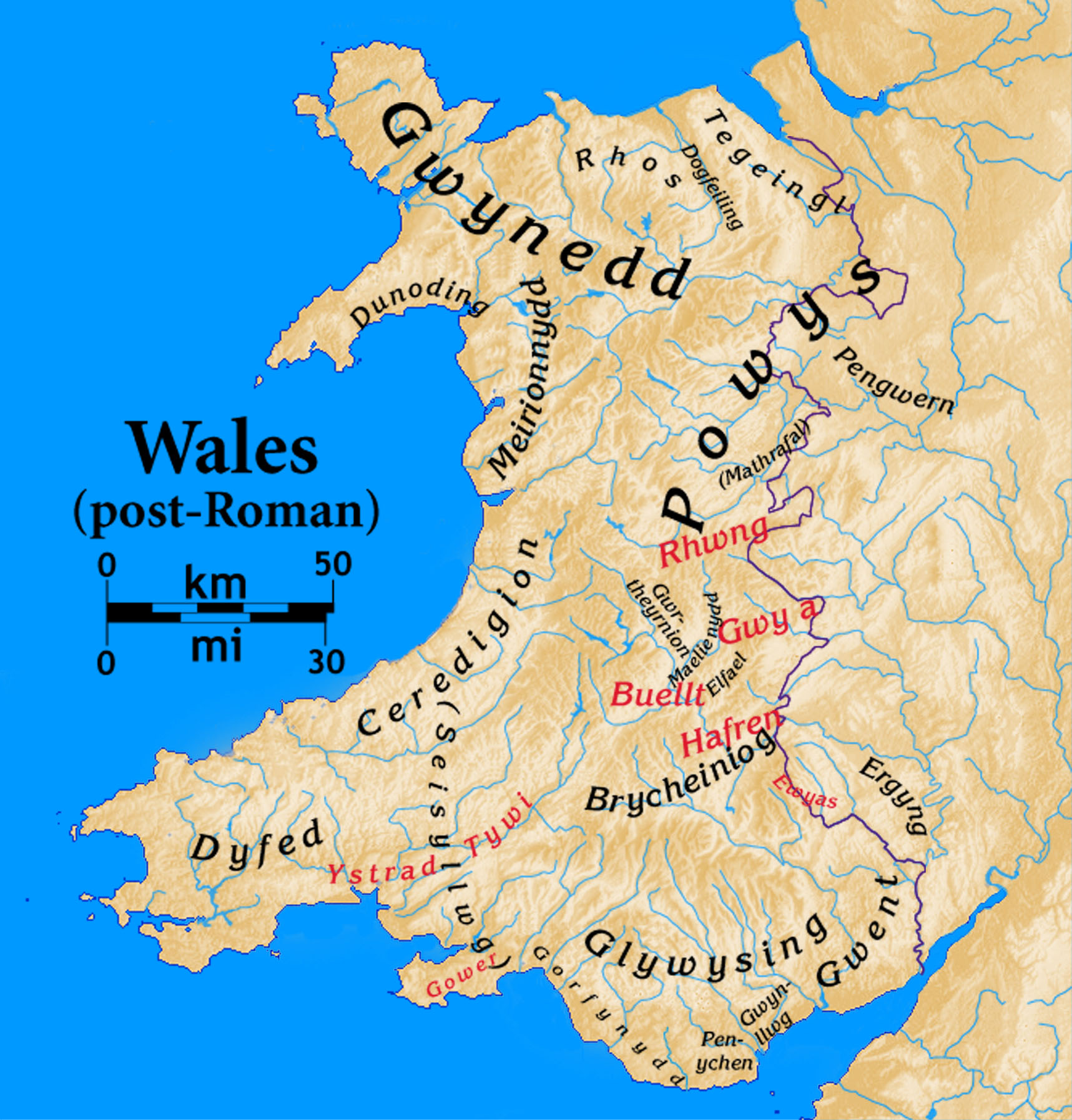An early king of Mid-South Wales, Owain Finddu - or Eugenius to give him his Roman name - is a shadowy historical figure about whom little is known for sure. Tradition claims him as a son of Magnus Maximus, the Western Roman Emperor, and his British wife, Elen Lwyddog. The royal genealogies for the early Dark Ages in Britain are seriously tangled due to inventive medieval genealogists who, desperate to claim descent from Romano-British power, played havoc with names, dates and lineages. It's probable than a man named Owain Finddu did exist, but it is entirely possible that Magnus Maximus was not his father.
 |
| Post-Roman Wales. Owain would have ruled the area of Gywysing in southern Wales. Gwent, to the east, was taken over by Vortigern in c.430 AD. |
Tradition states that after the fading of Roman power in Britain, Magnus Maximus made his three sons - Owain Finddu, Anwn Dynod, and Custennin - protectors of areas of Wales. Owain was most likely based at Tamium (modern-day Cardiff) and his protectorate stretched across much of modern-day Glamorganshire in South Wales. This western chunk of what had been Silures territory was the most Romanised part of Wales and Owain would have ruled more as a Roman-style governor rather than a Celtic king.
Given the chaos of the Roman withdrawal in the early fourth century, Owain's reign seems to have been fairly stable. By around 430 AD, however, he appears to lose control of Ewyas, an area to the west, to his brother-in-law, Vortigern. Vortigern granted his new territory to his son, Vortimer, and a new Welsh kingdom emerged by the name of Gwent. Perhaps in recognition of this loss, Owain's territory of Mid-South Wales was renamed Cernyw around 437 AD.
Like his father, mother and siblings, Owain makes an appearance in medieval Welsh folktales, especially the Mabinogion which records his death in around 440 AD. According to the legend, Owain and his younger brother, Custennin, were escorting their mother through the dangerous mountains of Snowdonia when they were attacked near by Cidwn, an evil giant. In the fierce battle that followed, Owain managed to kill the giant but was mortally wounded. On his deathbed, he shot an arrow into the sky and asked to be buried where it fell.
It is not known for sure how Owain died. As Roman control of Britain crumbled, Irish warbands started to raid along the Welsh coast and even up the Severn, seizing booty in the form of cattle, corn and even children, including the young St. Patrick. Given his geographical location, it's likely that Owain died at the hands of Irish raiders - a humdrum death spiced up by later medieval chroniclers. After his death, he was succeeded by his son, Mor.
No comments:
Post a Comment